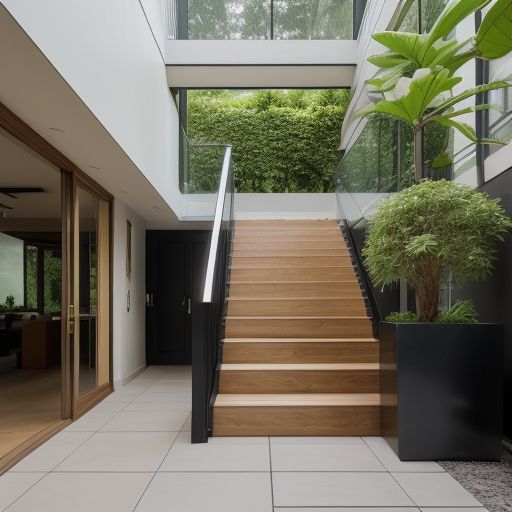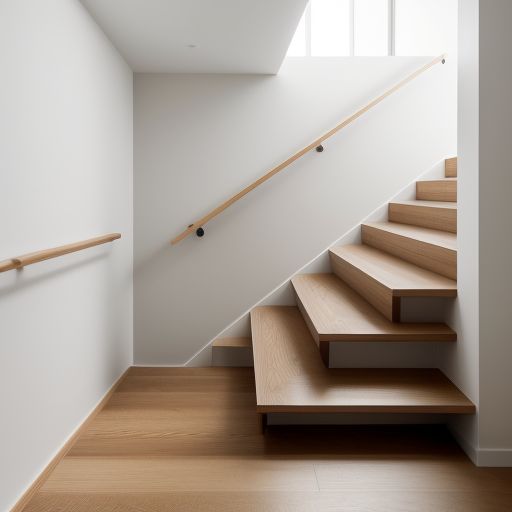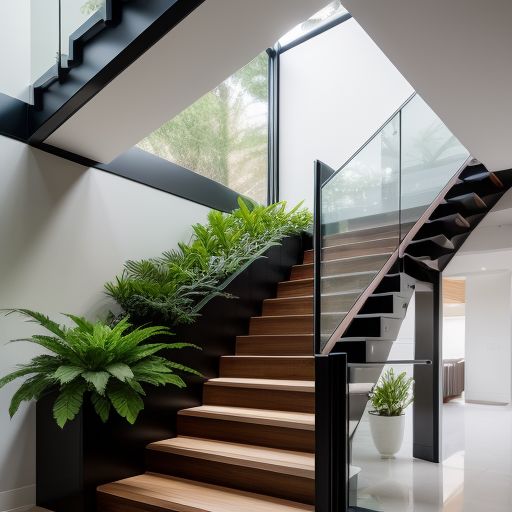Creating Harmony: How Feng Shui Influences Stairway Design in Your Home
July 22, 2024 | by Germaine

Introduction
In today’s fast-paced world, the design of our living spaces plays a crucial role in shaping our overall well-being. Among the myriad elements that contribute to a harmonious home, the staircase often stands as a pivotal yet overlooked feature. The principles of Feng Shui, an ancient Chinese practice centered on the flow of energy, provide valuable insights into how stairway design can influence the ambiance and functionality of a home. By understanding the significance of placement, materials, and aesthetics in stairway design, homeowners can create an inviting environment that promotes balance and tranquility.
This article delves into the intricate relationship between Feng Shui and stairway architecture, exploring how thoughtful design choices can enhance not only the visual appeal of a home but also its energy dynamics. Whether you are renovating an existing staircase or designing a new one, integrating Feng Shui principles can lead to a more harmonious living space, fostering positive energy flow and enhancing the overall quality of life. Join us as we uncover the essential guidelines and practical tips for harmonizing your home through mindful stairway design, ensuring that each step taken within your space resonates with serenity and purpose.
Here are some things you should know about promoting positive energy with your stairways.

1. Stairways should promote positive energy flow throughout your home.
Feng Shui is an ancient practice that focuses on the arrangement of space to enhance the flow of energy, or “Chi,” throughout a home. One of the critical elements in this practice is the treatment of stairways, which serve as vital conduits for energy movement. By applying Feng Shui principles to stairways, homeowners can promote a sense of balance and harmony within their living environment. Proper placement, lighting, and decor can significantly impact how Chi flows through these transitional spaces. When stairways are designed with care and intention, they can contribute positively to the overall atmosphere of the home, fostering well-being and tranquility for all its inhabitants.
2. Consider stairway shapes for tranquility.
When designing spaces that promote tranquility, the shape of stairways is a crucial element to consider. Stairways can often be overlooked in the bigger picture of interior design, yet their form and flow can significantly impact the overall ambiance of a space. Curved stairways, for instance, evoke a sense of softness and ease, guiding the eye and movement in a gentle manner. On the other hand, straight staircases may convey a sense of directness and efficiency but can sometimes feel austere. Incorporating wider landings and gentle gradients into the design further enhances the feeling of serenity.
The materials used—like wood, stone, or even carpet—can also contribute to the tranquil atmosphere, with softer textures providing a comforting touch. Natural light is another vital aspect; stairways that are illuminated by ample sunlight can create an uplifting experience, while those that are more enclosed may invoke a sense of introspection. By thoughtfully considering the shapes and features of stairways, designers can create spaces that not only facilitate movement but also foster a sense of peace and relaxation, encouraging individuals to savor their surroundings and the journey within the space. Ultimately, the design of stairways should harmonize with the overall aesthetic and purpose of the environment, reinforcing a tranquil experience that resonates with those who inhabit it.

Stairway placement impacts energy flow significantly.
The placement of stairways within a space plays a crucial role in influencing the overall energy and atmosphere of that environment. When positioned correctly, stairways can create a seamless flow between different levels of a home or building, enhancing both accessibility and aesthetic appeal. A well-placed stairway not only facilitates movement but also fosters a sense of connection and harmony throughout the space. This thoughtful arrangement can lead to an influx of positive energy, making the area feel more inviting and welcoming to both residents and visitors. Ultimately, the strategic design and positioning of stairways contribute significantly to the ambiance of any environment.

In the practice of feng shui, the placement of stairways within a home holds significant importance, as it can profoundly affect the flow of energy, or “chi.” A properly positioned stairway is essential to ensuring that energy can circulate freely throughout the space. Ideally, stairways should not be directly facing the front door, as this can lead to an immediate loss of energy upon entry. Also, a staircase tucked into a corner may restrict the flow of chi. Instead, they should be placed in a way that encourages a smooth transition from one level to another, promoting a sense of balance and harmony.
Additionally, the staircase should be well-lit and inviting, contributing to a positive atmosphere in the home. Well-maintained stairways, adorned with decorative elements or plants, can enhance the overall aesthetic and further improve energy flow. By adhering to these principles of proper stairway placement, homeowners can create a more harmonious living environment, ultimately leading to improved well-being and a greater sense of tranquility.

Incorporate natural materials for harmonious stairway design.
Incorporating natural materials into stairways can significantly enhance the tranquility of a space while promoting a deeper connection with the surrounding environment. By using elements such as wood, stone, or bamboo, staircases become more than just functional structures; they transform into harmonious extensions of nature. The warmth of untreated wood evokes a sense of calm, inviting those who ascend or descend to feel grounded and at peace. Similarly, the rugged texture of stone can create a tactile experience that resonates with the earth, fostering a serene atmosphere. This mindful selection of materials not only elevates the aesthetic appeal of stairways but also encourages individuals to appreciate the beauty of their natural surroundings, ultimately enriching their overall experience within the space. By integrating these organic elements, stairways can serve as gentle reminders of the tranquility that nature offers, creating a seamless blend between the built environment and the beauty outside.
Lighting enhances the stairway’s inviting ambiance.
Incorporating lighting strategically into stairways is essential for enhancing both safety and aesthetics within a space. Well-placed lighting can illuminate steps effectively, reducing the risk of accidents while encouraging movement. By brightening these transitional areas, you create an inviting atmosphere that fosters a sense of flow and connection throughout the environment. The right lighting design can also evoke positive energy, transforming the stairway from a mere functional element into a vibrant focal point. Whether through recessed lights, wall sconces, or illuminated handrails, thoughtful lighting choices can elevate the overall experience, making stairways not just pathways but uplifting journeys that enhance the ambiance of the entire area.
Transform your stairway with a personal touch
Personal touches on stairways play a significant role in fostering emotional connections within a space, transforming it into a warm and inviting environment. When individuals encounter a stairway adorned with thoughtful decorations or meaningful artifacts, they are not merely traversing a physical pathway; they are engaging with the essence of the home or building. Elements such as family photographs, unique artwork, or even plants can evoke memories and feelings, making the ascent or descent a more reflective experience. This intentional design can create a sense of belonging and comfort, encouraging people to pause and appreciate the surroundings. Ultimately, these personalized details elevate the overall atmosphere, inviting a deeper connection to the space.
Use colors that promote tranquility in stairway decor.
In designing the decor for a stairway, the choice of colors plays a crucial role in creating an atmosphere of tranquility. Soft, muted tones such as gentle blues, serene greens, and warm neutrals can transform the space into a calming retreat. These colors not only evoke a sense of peace but also help to reduce stress, making the stairway a more inviting transition between different areas of the home. Incorporating these tranquil hues through wall paint, decorative accents, or even artwork can enhance the overall aesthetic while promoting relaxation. By thoughtfully selecting colors that foster serenity, the stairway can become a harmonious part of the home environment.

Conclusion
To enhance the flow of energy within a space, it is essential to maintain a clear and uncluttered environment, particularly around stairways. Stairways serve as important transition points within a home or building, guiding movement between different levels. When clutter accumulates in these areas, it not only creates physical obstacles but can also impede the natural flow of energy. By ensuring that stairways remain free of unnecessary items, individuals can foster a more harmonious atmosphere. This practice not only promotes safety but also contributes to a sense of openness and tranquility. Ultimately, a clutter-free stairway can significantly enhance the overall energy of a space, making it more inviting and enjoyable for all who traverse it.
RELATED POSTS
View all


